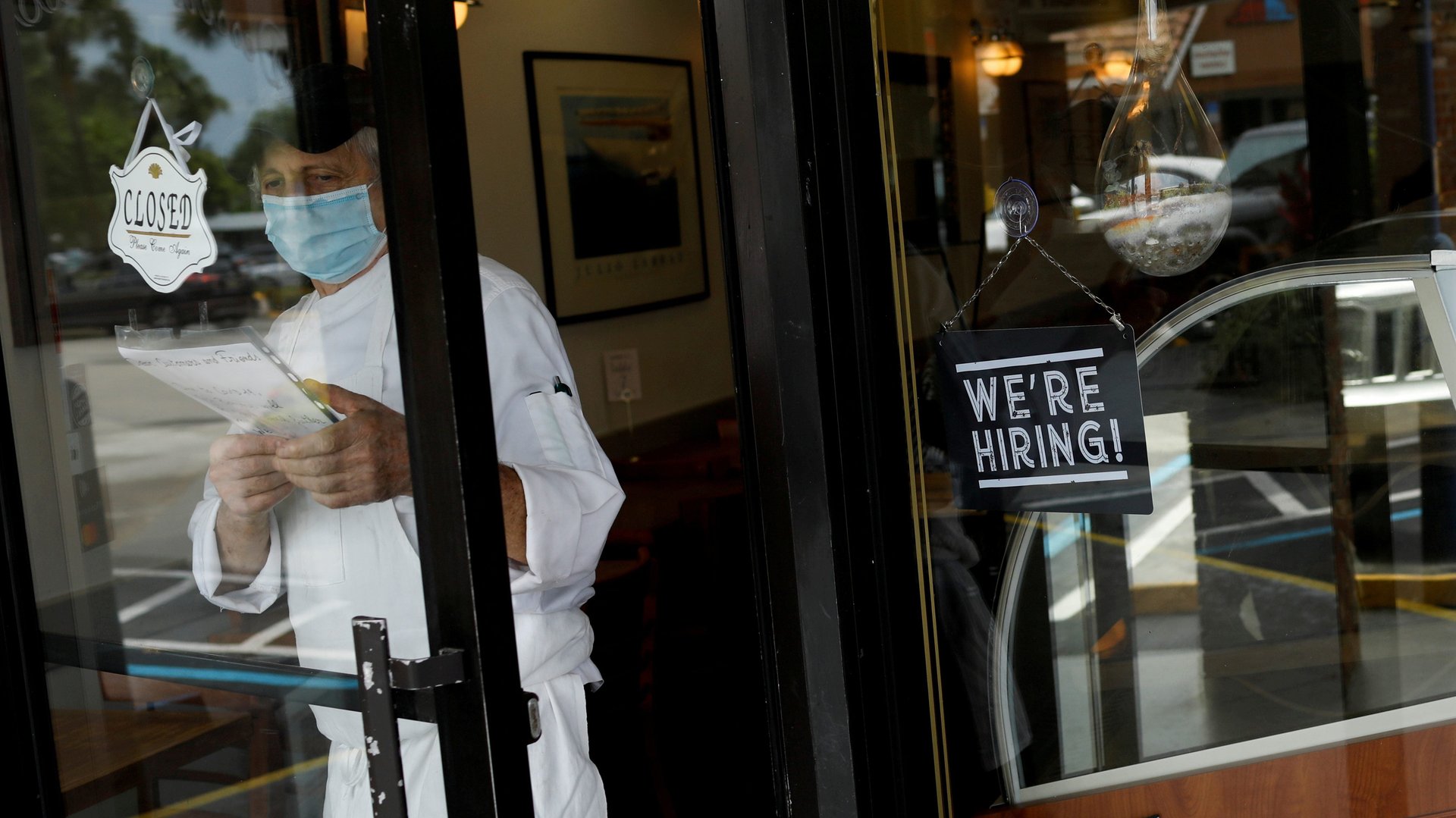No one wants to work in restaurants anymore
The US restaurant industry’s bad rap only got worse with the pandemic. Restaurant workers quit en masse in 2020, complaining about low pay, obnoxious customers, lack of benefits, and the risk of covid.


The US restaurant industry’s bad rap only got worse with the pandemic. Restaurant workers quit en masse in 2020, complaining about low pay, obnoxious customers, lack of benefits, and the risk of covid.
As they come back into the job market, many of them are looking elsewhere. In March, job seekers on Snagajob, a job board for hourly workers, were around three times more likely to apply to work at supermarkets and convenience stores than any other average hourly job. Meanwhile, the likelihood of workers applying for restaurant and hotel jobs dropped.
That’s a big contrast to the fall of 2020, when hourly workers were more likely to apply for jobs in hospitality and restaurants than the average hourly job.
The shift is part of a broader job reshuffling. Given the tightness in the labor market, workers have more leverage and can afford to shop around instead of taking the first position they get offered. For hourly workers, that better job is increasingly not at a restaurant.
Restaurant jobs may never recover
What pushed hourly workers to seek out new opportunities? Part of it is wanting more stability. At the height of the pandemic, when lockdowns kept Americans from eating out, restaurant and hospitality workers were laid off or furloughed in large numbers, according to data from the US Bureau of Labor Statistics (BLS).
In the fall of 2020, when businesses were opening back up even as cases rose (again), many hourly workers wanting to return to work avoided jobs at restaurants, which have a poor track record on access to paid leave. Meanwhile, many of those already employed at restaurants chose to get out. After soaring in 2020, quit rates among restaurant workers remain high, suggesting employees can and are shifting into better jobs.
It’s possible employment in the food service and hospitality industry may never recover. It’s still down 1.2 million workers from February 2020 levels. In response, restaurants continue to raise wages—in March they paid an average $16.69 an hour—and to dole out bonuses. But they are also bringing in automation and robots to fill in the gaps.
The precariousness of these jobs is fueling a union movement in the food industry, which includes Starbucks baristas organizing to demand more sustainable careers.
What hourly workers seek is changing
Meanwhile, the number of workers in the food and beverage retail industry has jumped, in part due to stores picking up some of the lost restaurant traffic during the pandemic. The pay may be less than what restaurant workers get on average, but supermarkets tend to provide steadier hours and offer entry-level workers more opportunities for management jobs.
Grocery and convenience store jobs are also less physically demanding. Convenience store jobs, in particular, are attractive to people outside urban areas, said Mathieu Stevenson, CEO of Snagajob, as they’re often closer to workers’ homes, allowing them to save on gas.
“One of the great revelations of covid was just how fungible hourly workers’ skill sets were,” said Stevenson. “People recognize ‘hey, I’ve got this skill set that’s a lot more transferable than I thought…I’m going to pick the industry that’s most interesting to me.'”